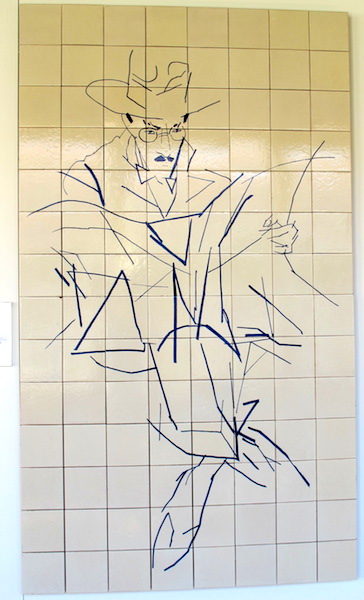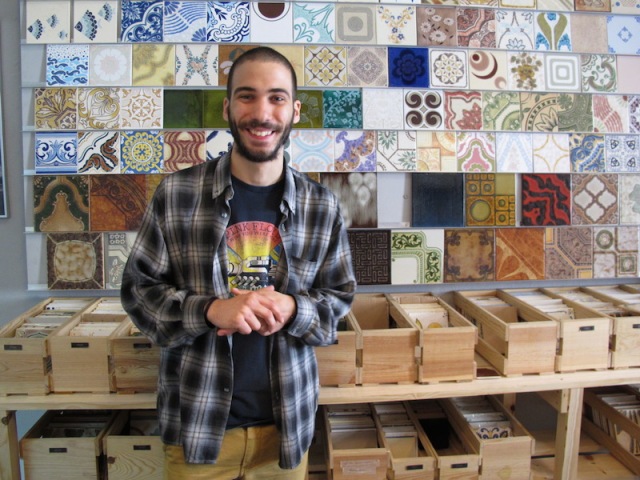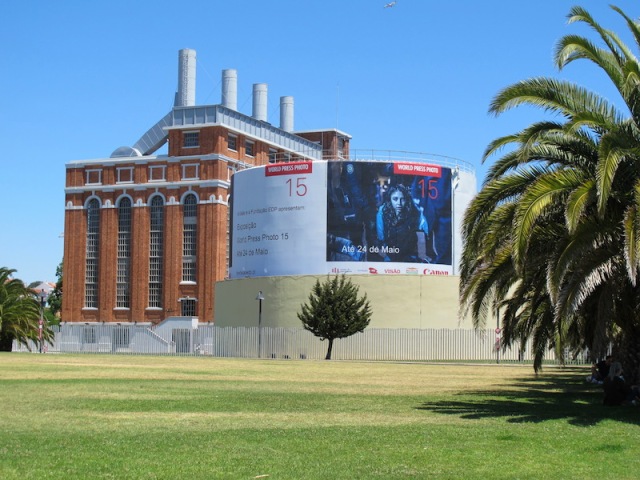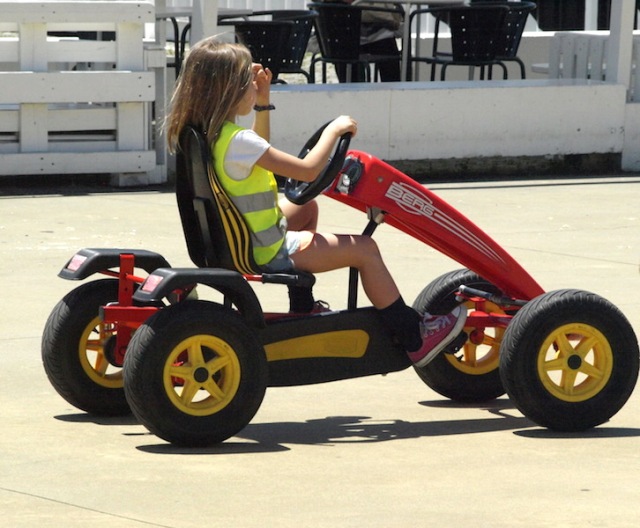LISBON PART 2: OUT and ABOUT
21st to 25th MAY 2015
Since September 2012 when our Encountering the Past journeys commenced I have laid down around 400 000 words. The words come easily enough and so does the general context of the story. What is difficult is deciding which photographs to include in each post. Each of the one hundred and forty eight posts to date have contained on average thirty photographs. However, I’m inclined to think this post, Lisbon Part 2, is going to be well above the average as not only are there the usual images associated with getting from one place to another, the city itself, its people and our bike riding experiences but images of Lisbon’s beautiful tiles.
Between the two of us we have taken hundreds of photographs of tiles all worthy of posting however only a small percentage will see the light. The following tile images show four of our favourites.
I’m drawn to this set for a number of reasons and they include: green is my favourite colour, the hand carved bas relief gives the tiles a dimensional appearance and what impresses me most is the glaze application, hours of meticulous work was involved. Each colour has been applied by hand using a brush and not only is that an art in itself but judging how thick to apply the glaze is a skill not easily learned. If the glaze is applied too thinly the green would most probably have come out brown and if applied too thick it may have shivered (cracked) or bubbled.
What attracts me to this piece is its tonal value. It is no simple matter to get varying density of colour in a glazed object. Not only is the glaze applied in varying thicknesses (the thicker the glaze the darker the colour) but to get the various shades of blues and greys in this case requires some pretty accurate measurements of the colouring compound to the glaze base.

Bev chose this arrangement. The design appealed to her and the sheer size of the piece impressed her as well. It was about two metres square.

Bev’s second choice and she chose this one because of it’s simple uncluttered nature, very different to most of the tiles found in Lisbon.
Tiles in Lisbon and Portugal generally are not only used in the interiors of houses but on the exterior as well. They are also used extensively on railway stations, churches, shops, seats, fountains and as street signs and house numbers.
Tiles in Portugal are called azulejos which comes from the Arabic az-zulayj meaning polished stone. The Moors, a North African medieval group of Muslims, invaded the Iberian Peninsula in 711 and brought with them the tiling technique, however tiles were not used extensively until the 15th century.
Tile murals are found in the most unusual places in Lisbon. Sometimes a beautiful arrangement can be found in a dead end lane where few people visit. The following images show an obviously old mural at the entranceway to a café. It appears to me that tile adornment on the outside of houses and business establishments is a status symbol.
The extensive use of blue and white colours was a Ming Dynasty influence and was due to the combination of Chinese application techniques and Islamic trade. Cobalt oxide was mined and exported to China from Persia (present day Iran) and at the time cobalt blue oxide was considered twice as valuable as gold.
The next photograph shows the chair leg detail; the scrolled knobs on the chair leg ends look almost like castors.
Murals such as the one above are, in effect, an investment but not easily sold on, as taking tiles off a wall without breaking them would be difficult. If tiles needed to be removed it would be a matter of taking the wall off the tile, not vice versa.
The beauty of tiles is their longevity. Scenes painted on tiles do not deteriorate like paintings on canvas, the images remain clear for centuries. There is a lot of detail in the above mural and if you take the time to study it you should find it easy to appreciate the work involved in painting such a piece.

Tile painting dominating the wall in the Convent Madre de Deus church, now part of the Lisbon Tile Museum.
The unusual object standing in the left bottom corner of the above photograph is not a lamp stand but an old form of heater. Hot water came into the square umbrella portion via a standpipe through the floor. Under the square shade was a core (similar to a radiator) that radiated heat into the room.
Glazed tiles were first used in Egypt as pavements and even though the Moors used tiles extensively it was the Portuguese who turned them into an art form. No other nation in the world has used tiles so imaginatively. Today they are still an important part of the country’s architecture; new buildings are faced with tiles and old buildings are being carefully restored, sometimes using very old tiles.
In Portugal today there are few tile factories, however architects and builders have access to stocks of tiles made in the 18th, 19th and 20th centuries. When out riding the back streets of Lisbon Bev and I came across the Cortico & Netos tile shop and because we were fascinated by the evolution of tiles we spoke at length with one of the owners.
Joachim’s late grandfather saw an opportunity back in the 1960/70s when tile factories were closing down and tiles were becoming less fashionable. He bought up stocks from tile factories guessing that in the future there would be a turn around and tiles would be required for restoration work. Following are a few images taken in his shop.
Ceramic decals are used extensively on mass-produced tiles, mugs and utility ware these days. An image is printed onto a plastic film using overglaze colours and the film is soaked in water and the image is then slid off onto the tile. The tile is fired in a kiln and the result is a long hard-wearing surface.
I suggested to Joachim that his business was not sustainable as once the stocks his grandfather bought were depleted that would be the end. He replied telling me there are enough tiles stockpiled that his grandchildren will be able to carry on the business.
Tiles are everywhere in Lisbon. Following are a few photographs of tiles on the outside of houses, businesses and apartments.

Tiles under the eaves and around windows of the Pergola B & B on the outskirts of Lisbon. The house was built in the late 19th century.
If you look closely at the above image you will see subtle design differences between each tile indicating they could be hand painted. Red in glazing is achieved by the use of iron oxides.
The history of tiles in Portugal is, you will agree, fascinating and to better appreciate tile history and evolution it is a must to visit the Tile Museum. Fortunately there is a bike path along the foreshore to the museum and as we rode we went shopping for some energy food, honey-coated nuts. Outside the shop we met with a couple of cyclists also stocking up on energy food, chocolate-covered icecreams. May and Ger had ridden from Holland and a more jovial couple we have yet to meet.

May and Ger getting an energy boost. They have every right to be happy as they had ridden over one thousand kilometres to get to Lisbon.
Lisbon’s Tile Museum is incorporated into the former convent of Madre de Deus. Of course there are many tile murals depicting biblical scenes. Such scenes are more difficult to create than geometrical designs. An example of fine work is shown in the following nativity scene.

In this nativity scene there is detail in the intelligent expressions on the faces of the horses. And the basket of eggs is curious. Eggs must have been a valuable commodity in those times.
The artist who painted this piece obviously found painting hands difficult, but when this piece was painted artist brushes were probably a little crude so fine work was difficult.
Of all the museums we have ever visited the tile museum for me was the most interesting and it was not only because of my interest in ceramics and graphic design but the exhibits could be touched and photographed. Many art galleries have a photography ban. I can understand why flash can’t be used as the burst of light may well damage the images. I think the ban relates to postcard sales from the gallery shop.
The tiles exhibited in the museum date from the 16th to the 19th centuries and I now present a collection of tile styles through the ages.
At various times over the past five years Bev and I have been fortunate to work with young Aboriginal children in remote northern Australia and on a number of occasions I introduced the children to tile making, teaching them how to draw a design, glaze and fire them. Whilst wandering around the museum I read an account of how designs were transferred to clay in readiness for painting with glaze. The 14th century technique described was almost identical to the method I thought I invented!
The method of getting an image onto a tile blank is: draw the image onto tissue or tracing paper using an 8B (very soft) pencil, charcoal would have been used centuries back; using a dampened unfired tile blank place the tissue paper and the tile together and gently rub; the tissue paper is peeled off the tile blank and the pencil outline remains on the surface; the image is then painted with glaze and once dry the masterpiece is fired to 1080 degrees, higher if porcelain clay is being used.
In Portugal the art of tile making and decoration is still going on. At the museum we were able to look into the restoration area and watch a group of children learning the art of decorating tiles.
The student above is using a commercial glaze. These glazes are easily applied and are reliable if applied correctly. In times past glazing was more time-consuming and difficult. It involved coating the unfired (raw) tile blank with powdered glass and firing it in a kiln. The powdered glass melted and created a hard surface on which the design was painted using various coloured oxides. The tile was fired a second time and the oxides would melt into the glass surface. The various colours in glazes are derived from oxides: Green–copper; Red–iron; Yellow–cadmium; Black–manganese; Blue–cobalt. Various coloured ochres are also used.
This brings tiles of Portugal to an end. I now take you out and about Lisbon.
There are times when travelling in Europe when one becomes overwhelmed with the magnitude of the churches, cathedrals, old civic buildings and monuments. At times you seriously consider staying indoors and reading a book. This is how we felt on one of the days in Lisbon, however a couple of travellers at the hostel said we had to see the Discoveries Monument before we left Lisbon.
The Discoveries Monument honours the main characters of the Portuguese Discovery Age. It was built in 1960 to commemorate the 500th anniversary of the death of Prince Henry the Navigator. The figures are amazingly lifelike and I’m glad we made the effort to ride.

Portside of the Discoveries Monument. The figures are standing on a pedestal representing a ship’s bow.
The bike path to the monument passes under the 25th of April suspension bridge. The bridge by world standards is pretty ordinary but not having passed under a bridge of this size before (2.2km long) I was struck not by its size but by the noise generated by vehicles passing over it. The sound was a constant drone similar to an idling jet aircraft. The foreshore near and under the bridge was lined with open-air cafes and restaurants and I personally couldn’t think of a less desirable place to sit and have a meal. The bridge was originally named the Salazar Bridge after the right wing dictator who ruled from 1932 to 1968. After Portugal’s revolution in 1974 those who supported the revolution called the bridge the 25th of April to celebrate the change of power on that date, those loyal to Salazar’s party continued to call it by the original name and those who didn’t want their politics known just called it “the bridge over the river”.

The 25th of April suspension bridge across the Tagus River Lisbon. Even at this distance the drone of traffic could be heard.
Further along the Tagus River we reached another monument, the Belem Tower. Built in 1515 as a fortress to guard the entrance to Lisbon’s harbour, the Belem Tower was the starting point for many of the voyages of discovery, and for the sailors it was the last sight of their homeland.
The fact that the authorities in Lisbon saw fit to restore this old power station and open it to the public shows some forward thinking. The closest large town near where we live in Australia, Tamworth, had an old power station like the one shown above but the city fathers did not see the potential in keeping the station as an historical monument and it was demolished. The land was sold to a developer who built a motel. The historical significance was that Tamworth in 1888 was the first town in Australia to have street lighting installed. The Tamworth power station could have looked like this but sadly it’s gone; such is the way of progress.
Along the coast from Lisbon there are a number of seaside towns that are very popular with the locals and tourists. One of these is Cascais. Following are a few images to ponder.
Note there are lots of sunbathers but few swimmers. We were told that the water was cold but it also could be that swimming is not recommended at times because the beach is located near the main fishing port and the water is considered to be unsuitable for bathing due to high levels of pollution.
It’s a curious thought as to why white people are intent on getting brown and brown people are intent on getting white. Dark skinned people do not lay in the sun, they use skin whitening cream.
Set back from the beachfront we found a secondhand bookshop. If it’s not too difficult we try to find one in every city and town we visit, you never know what treasures one might pick up.
Caroline owns the Livraria Galileu and she is now into her 43rd year of dealing with the written word. She sits at the front of her shop, cigar in hand, chatting to potential customers. We discussed authors and books in general. Caroline had a rather extensive collection of photographic books showing mostly black and white classic images from past days.

Caroline was not keen on me placing this image on the blog but after she viewed the image she agreed. The wonders of digital photography’s instant replay!
The lady standing on the stairs in the above photograph was attempting to extract a book from low down in the pile in front of her and because the pile was about to collapse down the stairs I asked her if she would like some assistance. Her reply in a very English voice was, ‘Leave me alone. You people are always wanting to interfere. Mind your own business, leave me alone’. The pile collapsed. ‘See what you have done. You have distracted me and the pile has collapsed’. I snuck away quietly.
At the end of the Salamanca Spain post I made reference to open spaces in cities and how important it is for kids to get out of high-rise apartments and play. Fortunately Lisbon has some open spaces, mostly along the foreshores. At one location there was a huge expanse of concrete and kids pedalled hire billycarts with enthusiasm. The name ‘billy’ as in cart relates to the fact that in the 1920 small carts were often pulled by a billy goat.
I have shown three billycart images because I am hooked on billycarts. Billycart is a colloquial name used back in the 1940s and 50s. They were easy to make because all that was needed was a wooden box and two wooden axles attached underneath with large roller bearings on each end. The old roller bearings acted as wheels. There were variations, of course. The steel bearing made a metallic screaming sound when racing on a concrete footpath. The steel-wheeled billycart was not pedalled but pushed by a friend.
Sometimes when travelling in foreign lands one comes across oddities that defy comprehension. For example, when out and about Lisbon we came across pieces of colourful crochet work wrapped around a number of street trees.
Finding out why the trees were wrapped was easy; Bev asked a lady who redirected the question to her young son who told us the decoration was done by a group of environmentalists whose message was ‘care for the trees now so we have a secure future’.
Now to a few faces of Lisbon. Most of them were shot from the hip and to do this I set the ISO rating to 400, estimate the distance and set focus to manual and zoom to wide, aperture f11.
 Before closing this post I would like to tell you a little more about Binod, the manager of the hostel where we stayed in Lisbon. Binod came to Lisbon from Nepal about three months ago and from what I can gather he had assisted passage paid by the Portuguese Government so he is therefore bound by contract. Unfortunately since he arrived, a disastrous earthquake struck Nepal and although his wife and child were not injured their house was destroyed and they are living under plastic in the open. Naturally Binod longs to go back to Nepal to be with his wife and son but finances do not permit. His tale is no doubt typical of many Nepalese, there are approximately 40 000 working in Portugal.
Before closing this post I would like to tell you a little more about Binod, the manager of the hostel where we stayed in Lisbon. Binod came to Lisbon from Nepal about three months ago and from what I can gather he had assisted passage paid by the Portuguese Government so he is therefore bound by contract. Unfortunately since he arrived, a disastrous earthquake struck Nepal and although his wife and child were not injured their house was destroyed and they are living under plastic in the open. Naturally Binod longs to go back to Nepal to be with his wife and son but finances do not permit. His tale is no doubt typical of many Nepalese, there are approximately 40 000 working in Portugal.
Every now and then we meet people during our travels who we warm to instantly. Binod was one of those individuals. He has a sister living in Sydney who we will visit and his family in Nepal has invited us to stay with them if we get to Nepal.
The next post relates to our stay in Faro, a town on the south coast of Portugal. Hope you enjoyed Lisbon and if you did you might continue travelling with us as we head for Morocco. Leave a comment if you wish.
Finally, if you want more of the Lisbon Tile Museum have a look at http://www.theculturemap.com/azulejo-tile-museum-lisbon/. The author Shing is as much as an enthusiast as I am re the museum.




















































Wow! You’ve gone into so much detail, I love it! You’ve just brought back some of my favourite memories from Lisbon, and also highlighted things I didn’t see for myself. The art of Azulejos really makes Lisbon one of the best cities to stroll around in, every nook and cranny offers something to the eye, doesn’t it? Going inside one of the factories sounds like a fab experience, thanks for sharing.
Dear Fred and Bev,
Well, we are back from an amazing 3 weeks in beautiful warm Hawaii. We have caught up on your
latest amazing blogs. I absolutely loved Lisbon and all the beautiful, beautiful tiles.My favourite was
the very first one, the 2 rows of blue .So glad that you are having such a wonderful time, keep taking all those amazing photos !! Looking forward to the next blog.
P.S Received your great postcard.
Love Kevin and Sue
Sue and Kevin
Bev and I will be looking forward to talking with you further at some future date re your time in Hawaii. We are at present in southern France having been to Morocco. Blog post Morocco coming soon. We are staying with an Australian friend here and by the time we leave we will have been here a week. It’s good to stay put for a bit. Also I’m glad we were not riding this past week as Europe has experienced a heat wave.
During our R & R here we have been catching up with the blog and a new post, Seville will be posted in a few days. Had a bit of bad luck in Barcelona. When in the park near the railway station folding our bikes some low life nicked my camera bag. It was my fault because I didn’t switch the eyes in the back of my head on. However it is no great loss as the DSLR camera I have been using was getting a bit long in the tooth, the flash didn’t work and there were other little things not working so well. We will be in London within a week so I will buy a new camera there.
Will not tell you too much at the moment, I don’t want to spoil your blog reading.
Thanks for making contact.
Fred and Bev